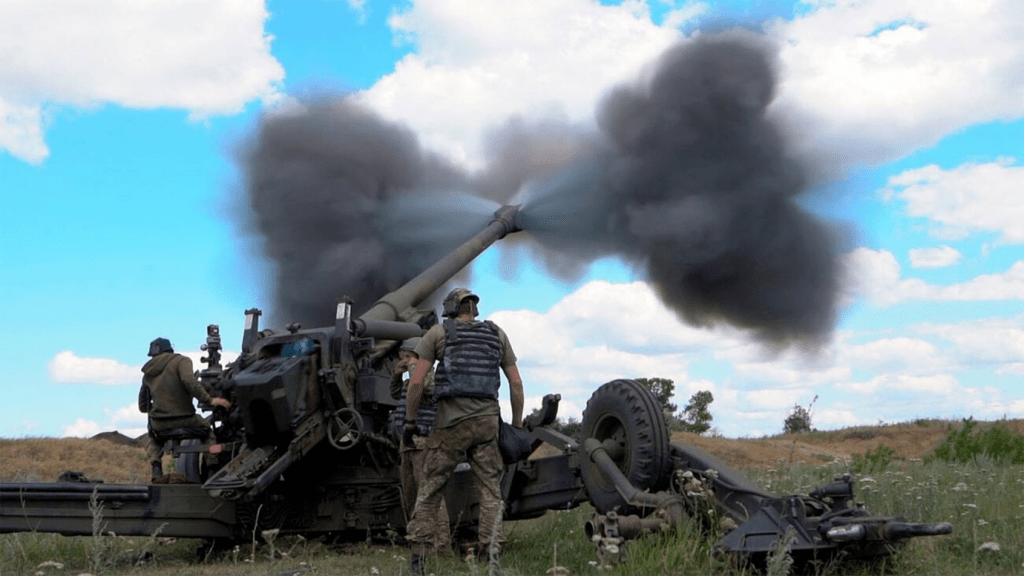
Canada Appeals for International Firefighting Aid
June 09, 2025: Canada has issued an international appeal for firefighting support as wildfires intensify across multiple provinces

September 29, 2022: -In the U.S. weapons industry, the average production level for artillery rounds for the 155-millimeter howitzer, a long-range heavy artillery weapon currently used on the battlefields of Ukraine, is about 30,000 rounds per year in peacetime.
In nearly two weeks, the Ukrainian soldiers fighting to invade Russian forces go through that amount.
That’s according to Dave Des Roches, an associate professor and senior military man at the U.S. National Défense University. And he’s worried.
“I’m greatly concerned. Unless we have new products, taking months to ramp up, we’re not going to have the ability to supply the Ukrainians,” Des Roches said.
Europe is running low too. “The military stocks of most [European NATO] member states have been, I wouldn’t say exhausted, but depleted in a high proportion because we have been providing a lot of capacity to the Ukrainians,” Josep Borrell, the E.U.’s high representative for foreign affairs and security policy, said earlier this month.
On Tuesday, NATO Secretary-General Jens Stoltenberg held a special meeting of the alliance’s arms directors to discuss ways to refill member nations’ weapons stockpiles.
Military analysts point to a root issue: Western nations have been producing arms at much smaller volumes during peacetime, with governments opting to slim down costly manufacturing and only producing weapons as needed. Some of the guns running low are no longer being made, and highly-skilled labor and experience are required for their production, which has been in short supply across the U.S. manufacturing sector for years.
Indeed, Stoltenberg said during last week’s U.N. General Assembly that NATO members need to re-invest in their industrial bases in the arms sector.
“We are now working with industry to increase production of weapons and ammunition,” Stoltenberg told the New York Times, adding that countries needed to encourage arms makers to expand their capacity longer term by putting in more weapons orders. But ramping up defense production is no quick or easy feat.
We provide the insights on leaders who are responsible for taking their organization to new heights, all the while bringing together a group of talented individuals.

June 09, 2025: Canada has issued an international appeal for firefighting support as wildfires intensify across multiple provinces

May 27, 2025: Air Canada Cuts Five U.S. Routes for Winter 2025–26, Part of Broader Cross-Border Retrenchment

May 26, 2025: Trump Freezes $2.2B in Federal Grants to Harvard Over DEI, Threatens Tax-Exempt Status.

May 14, 2025: Microsoft has announced plans to reduce its global workforce by approximately 3%, affecting roughly 10,000 employees across multiple departments.

May 13, 2025: The Trump administration is considering suspending the constitutional right of habeas corpus in a bid to accelerate mass deportations.

April 29, 2025: Donald Trump’s second term has reached the 100-day mark under sustained public skepticism, with national approval ratings